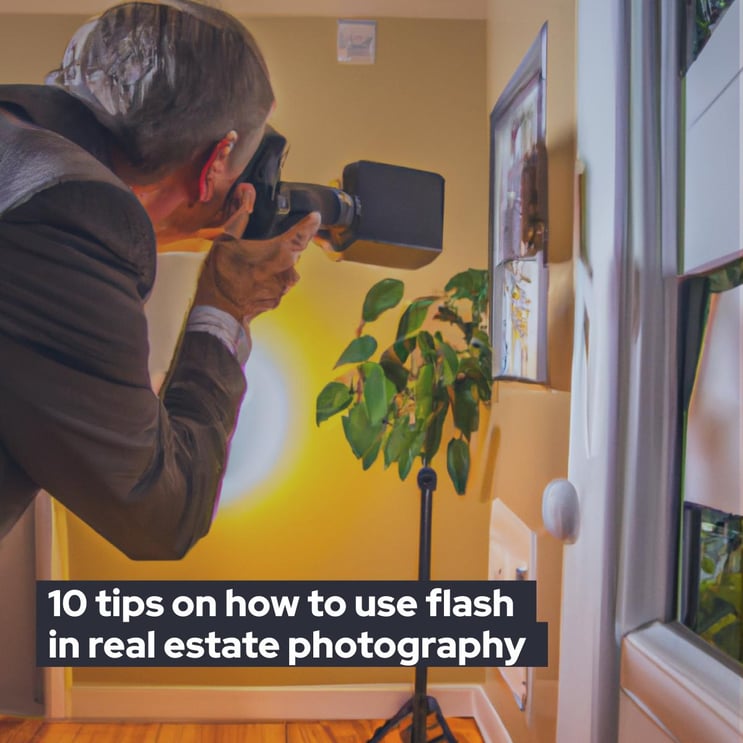🏠💡 10 Tips on how to use flash in real estate photography.
The use of flash in real estate photography can make the difference between an average image and one that stands out. Learn how to get the most out of your lighting equipment with these 10 practical tips.
1. 📸 Use external flashes
On-camera flashes are often not enough to properly illuminate a property. Therefore, we recommend investing in external flashes that allow you to better control the intensity and direction of the light (such as Speedlite flashes). See our article on recommended cameras for real estate photography for more information on suitable equipment.
2. 🌟 Use diffusers and light modifiers.
Diffusers (such as softboxes) and light modifiers (such as umbrellas) can soften shadows and improve lighting quality. These accessories are essential to avoid unwanted reflections and achieve uniform lighting in real estate photography.
3. 🌞 Combine flash with natural light
Take advantage of natural light whenever possible, but remember that flash can help balance dark areas and enhance contrast. The key is to find the perfect balance between the two light sources, using the flash exposure compensation (FEC) setting if necessary.
4. ⚡ Control the flash power
It is essential to adjust the flash power according to the lighting conditions in the room. Try different settings to find the right intensity and avoid overexposed or underexposed images. Most flashes allow you to adjust the power in 1/3 EV (Exposure Value) increments.
5. 🔄 Learn the technique of "bouncing flash".
This technique involves bouncing the flash off surfaces such as walls or ceilings, which allows you to distribute the light more evenly and soften shadows. Bouncing flash is especially useful in small spaces or spaces with a lot of reflective objects. Be sure to use a flash with a swivel head to facilitate this technique.
6. 📍 Use a tripod
Using a tripod will allow you to keep your camera steady and reduce the chances of blurred or shaky images, especially when shooting with slow shutter speeds (below 1/60 second).
If you are interested in buying a tripod, you can find a wide variety at specialty photography stores and also online, such as Amazon.
7. 📋 Take multiple pictures with different settings
Experiment with different flash settings and shutter speeds to get a variety of results. Then select the images that best represent the property. You can also use bracketing to take multiple images at different exposure levels and combine them in post-production.
8. 🎨 Shoot in RAW
Shooting in RAW format will allow you to capture more information and make editing easier. You will be able to adjust exposure, white balance, contrast and other parameters with greater flexibility, using editing programs such as Adobe Lightroom or Photoshop.
9. 💻 Post-production image editing
Post-production editing is essential to improve the quality of your real estate photographs. Use editing software to adjust exposure, contrast, saturation and other parameters to get more impactful images. You can also apply techniques such as perspective correction or removal of unwanted objects to further enhance the look of your photos.
10. 📚 Learn from the professionals
Check out online resources and tutorials to improve your flash real estate photography skills. You can find helpful tips and advanced techniques in our real estate photography tips article. You can also consider taking real estate photography courses to hone your skills.
🏁In conclusion
The proper use of flash in real estate photography is essential to obtain high quality images that highlight the features of a property. By following these 10 tips, you will be able to improve your skills and get the most out of your lighting equipment. Good luck on your next projects!


